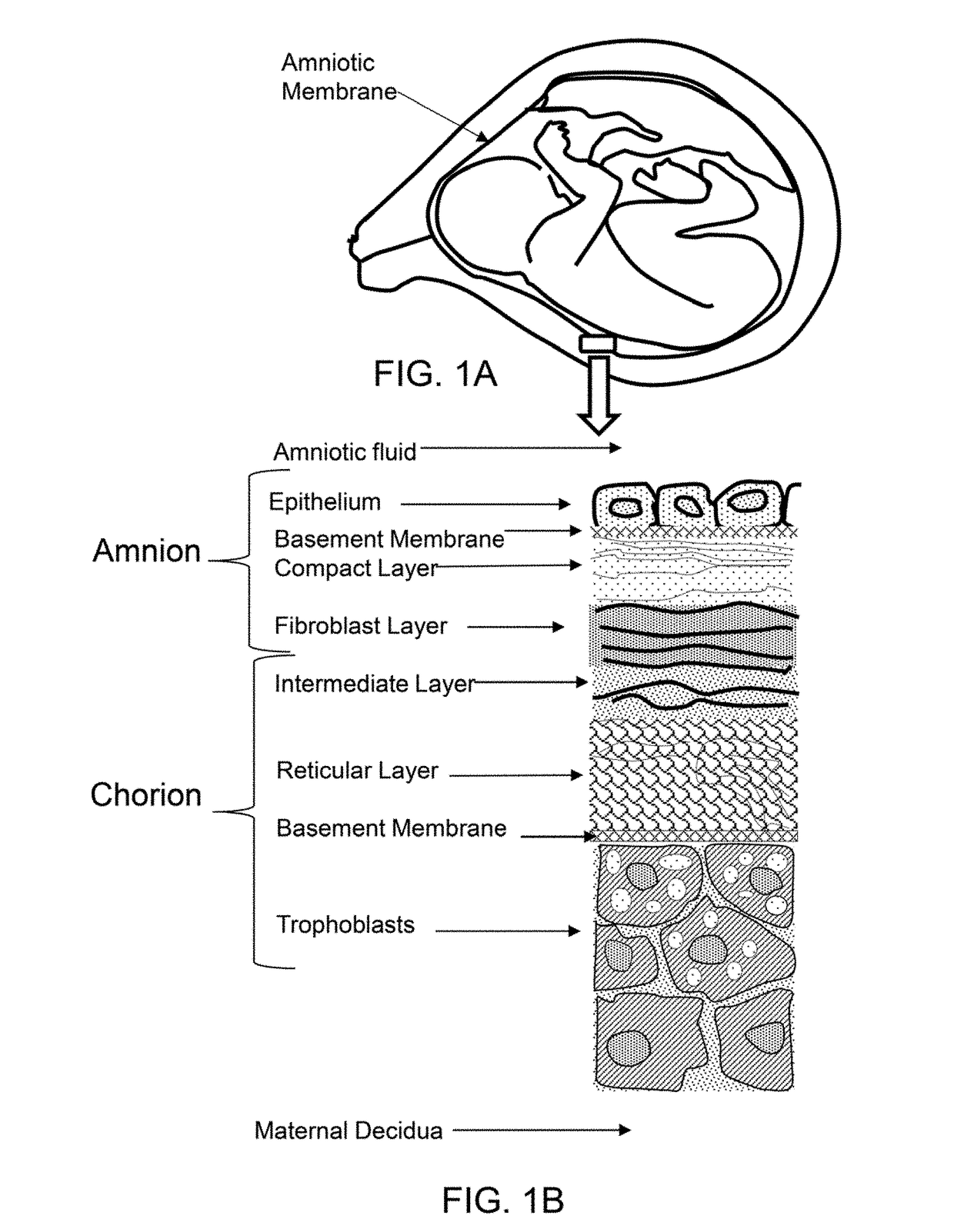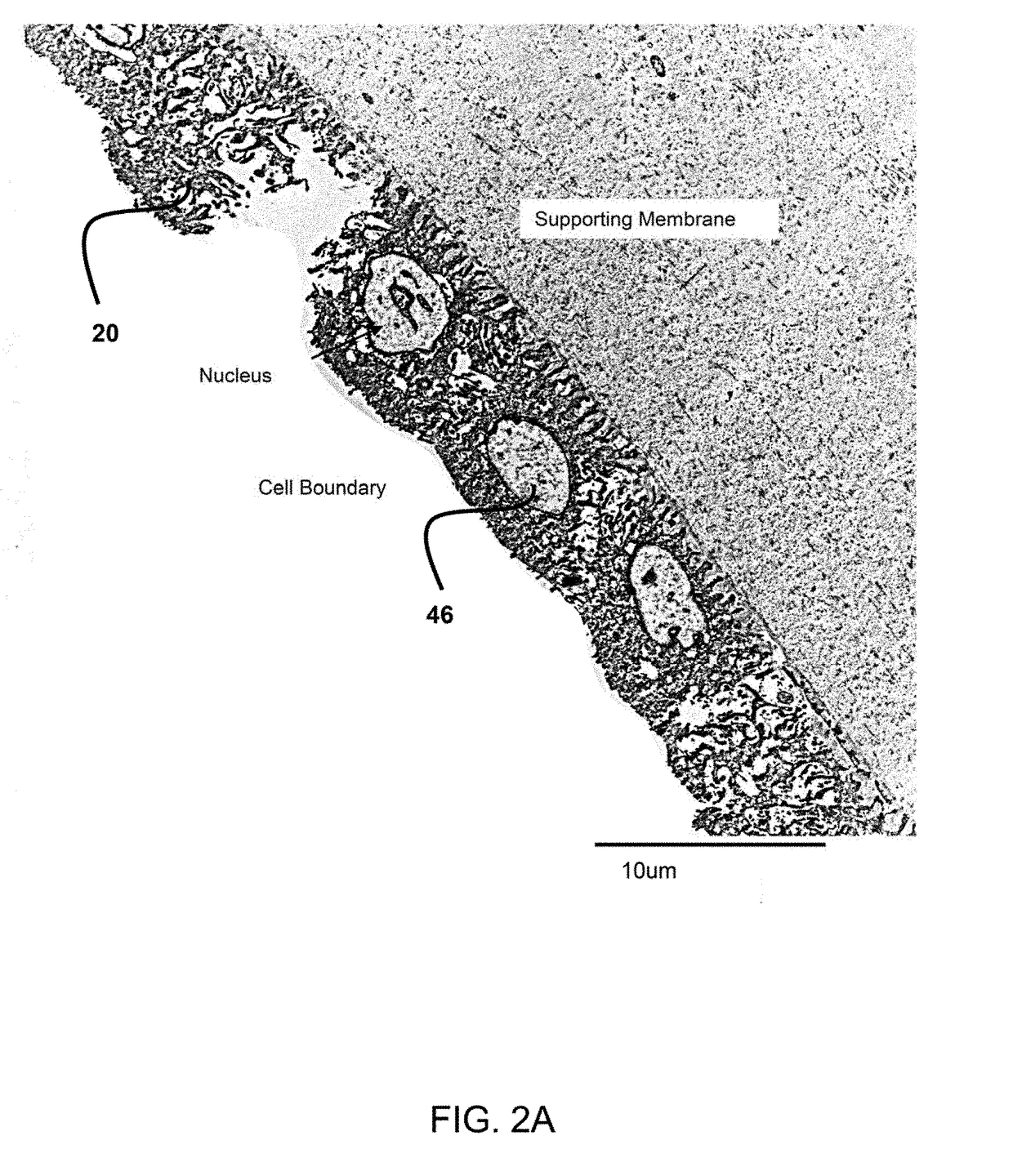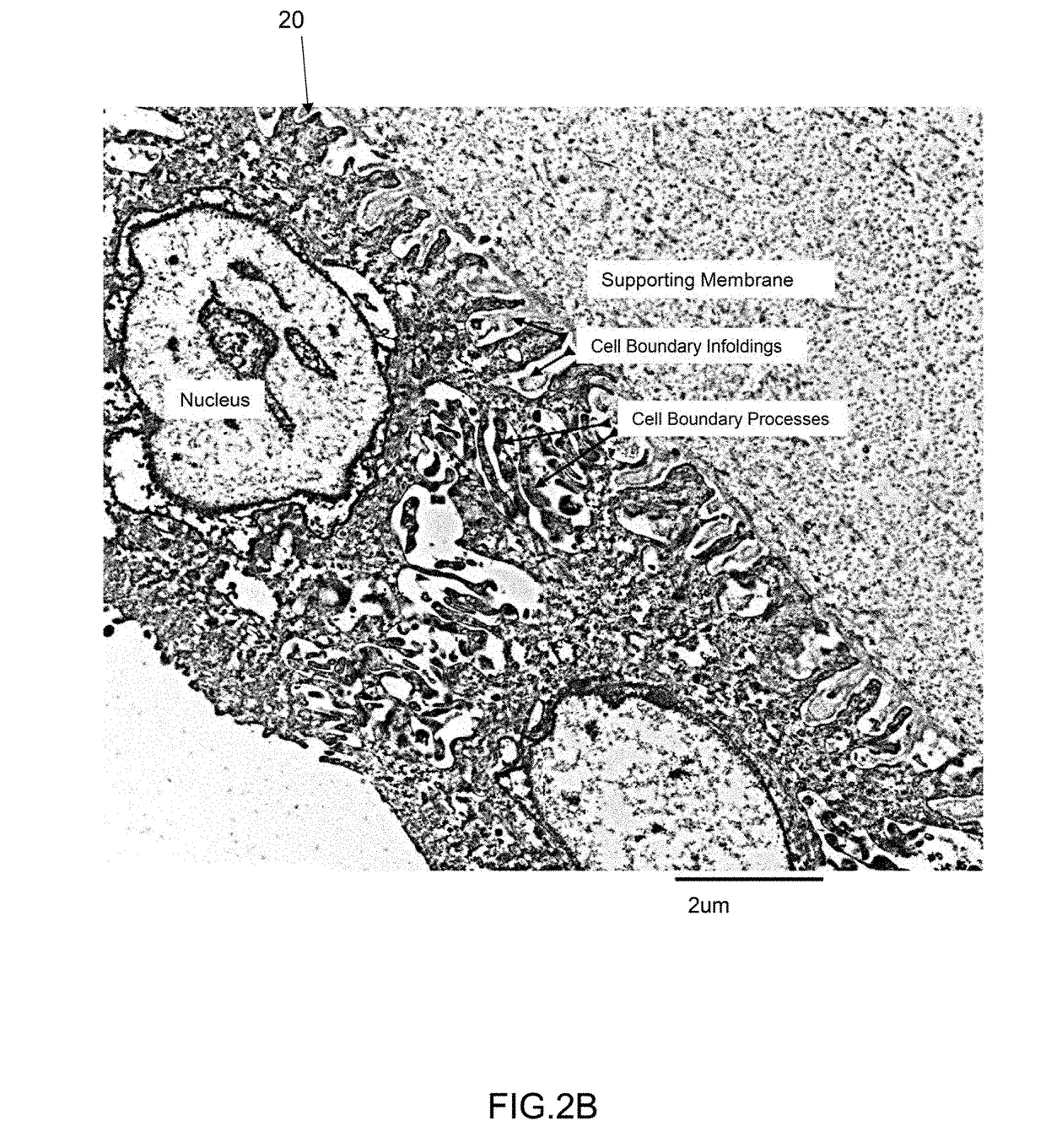Method of treatment utilizing an acellular amnion derived therapeutic composition
a technology of amnion derived acellular materials and therapeutic compositions, which is applied in the directions of unknown materials, pharmaceutical delivery mechanisms, and aerosol delivery, etc., can solve problems such as physical damage or other physical damage, and achieve the effects of reducing damage, reducing loss or washout, and maintaining cell viability
- Summary
- Abstract
- Description
- Claims
- Application Information
AI Technical Summary
Benefits of technology
Problems solved by technology
Method used
Image
Examples
example 1
[0113]Three 1 mL samples of acellular amniotic fluid were lyophilized under gentle vacuum. The resulting was subsequently gradually reconstituted in 1 ml, 0.5 ml, or 0.25 ml of Plasma-Lyte A at 4° C. avoiding mechanical stress. Total protein concentration prior to lyophilization and in reconstituted samples was measured using the NanoDrop 8000 spectrophotometer platform. Total protein concentration in the acellular amniotic fluid prior to lyophilization (Acellular Amniotic Fluid), and reconstituted in 1 mL, 0.5 ml, and 0.25 mL was 6.24 mg / mL, 5.1 mg / mL, 10.41 mg / mL, and 18.31 mg / mL, respectively, as shown in FIG. 24. Total protein concentration in the samples reconstituted in 1 mL, 0.5 mL, and 0.25 mL of Plasma Lyte-A were 84%, 172%, and 302%, respectively, as compared to the non-lyophilized acellular amniotic fluid.
PUM
| Property | Measurement | Unit |
|---|---|---|
| particle sizes | aaaaa | aaaaa |
| particle sizes | aaaaa | aaaaa |
| particle sizes | aaaaa | aaaaa |
Abstract
Description
Claims
Application Information
 Login to View More
Login to View More - R&D
- Intellectual Property
- Life Sciences
- Materials
- Tech Scout
- Unparalleled Data Quality
- Higher Quality Content
- 60% Fewer Hallucinations
Browse by: Latest US Patents, China's latest patents, Technical Efficacy Thesaurus, Application Domain, Technology Topic, Popular Technical Reports.
© 2025 PatSnap. All rights reserved.Legal|Privacy policy|Modern Slavery Act Transparency Statement|Sitemap|About US| Contact US: help@patsnap.com



